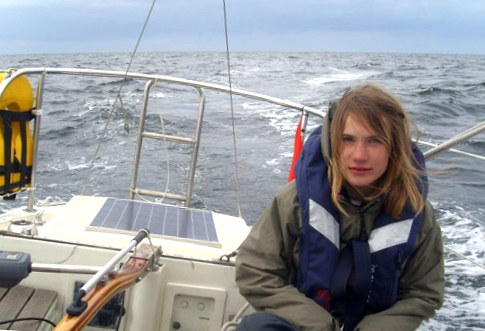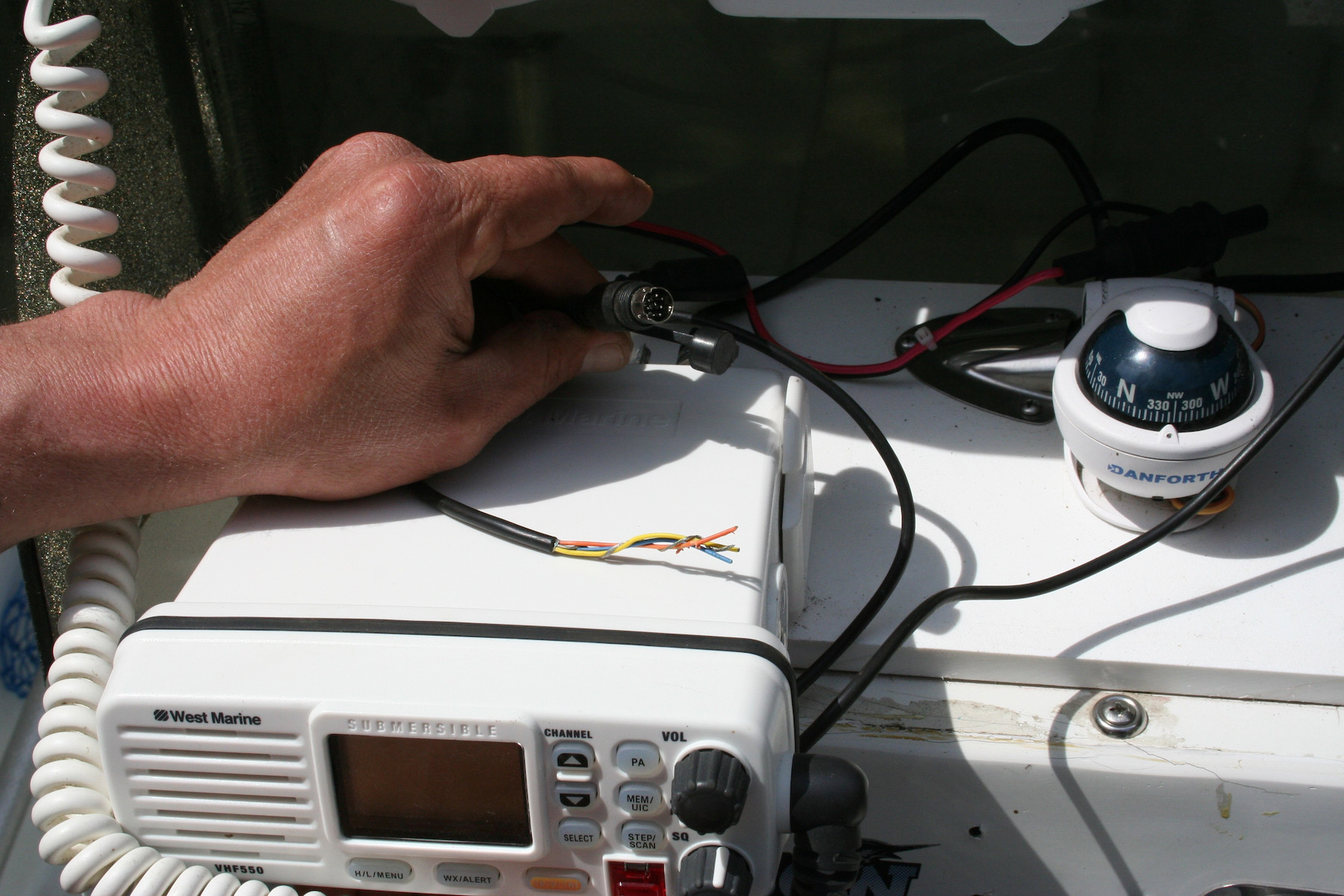
Volvo 70 Pyewacket Smashes Newport to Cabo Record
This year’s Cabo Race, organized by Newport Harbor Yacht Club, lived up to all the hype we could generate, and then some. The race got underway just as a strong northwesterly blanketed the course and then increased in pressure. It was almost as if the weather gods wanted Doug Baker and Magnitude 80’s long-standing monohull course record to fall. The 16-year-old record didn’t just fall, however. It was absolutely obliterated and smashed to pieces. Romping down the course from Newport Beach to Cabo San Lucas in less than two days, Roy P. Disney and his world-class crew on their Volvo 70 Pyewacket 70 have established a new monohull course record of just 1 day, 21 hours, 22 minutes — knocking some 14 hours off Magnitude 80’s old record!

While this record is certainly very quick for a monohull to cover the 790-mile course, it should be noted that a multihull has done it more quickly. H.L. Enloe’s ORMA 60 Mighty Merloe holds the outright record of 1 day, 16 hours, 14 minutes.
As soon as the boats hit the breeze, Pyewacket 70 began to leg out over her bigger, faster-rated rival, Manouch Moshayedi’s Rio 100 super-maxi. We hoped to see Rio 100 claw back the distance and create an exciting battle down the Baja. That battle never quite materialized, as Rio 100 sustained a rudder linkage failure that knocked them out of the race and sent them sailing northward toward San Diego.
With Pyewacket 70’s lead all but guaranteed barring gear failure, the round-the-world racer and her crew kept their foot firmly on the gas pedal, pushing toward Cabo. Slowing down in a soft spot down the coast that reportedly brought the true wind speed down to a bottom end of 12 knots, they eventually got back into a solid 20 knots of pressure that sent them smashing into the finish at 10:22 a.m. on Monday, just 45 hours after beginning in Newport.

While we correctly predicted that the course record would fall, we didn’t give the canting-keel 70-footer much of a chance to correct out on handicap. But Pyewacket 70 proved us wrong in spectacular fashion. The Volvo 70 went on to score the elusive trifecta of first to finish, fastest elapsed time and fastest corrected time. Pyewacket 70 beat David Clark’s ORR B-winning Santa Cruz 70 Grand Illusion by more than three and a half hours on corrected time! Other divisional winners included Bob Pethick’s Rogers 46 Bretwalda 3 in ORR C and Cecil and Alyson Rossi’s Farr 57 Ho’okolohe in ORR D.
In addition to Rio 100 dropping out of the race with gear failure, Doug Baker’s Kernan 75 Peligroso (oftentimes listed as a Kernan 68 or 70) also dropped out after hitting a UFO at high speed, sustaining minor keel damage and reportedly ripping up the kelp cutter. All crew are safe, and both boats have since returned to California under their own power. While the Newport to Cabo Race is oftentimes famous for being light on the way down and then nuking from the northwest on the delivery home, this record-breaking year also looks likely to be kind to the delivery crews. High pressure and light winds settling in over much of the Baja Peninsula this week are setting up a nice trip home to California.
Paul Cayard to Lead US Olympic Sailing Program
US Sailing has just announced that Bay Area sailor Paul Cayard will take the helm of the US Sailing Team, including the US Olympic Sailing program.
Cayard has been involved in Olympic sailing throughout his career. He is a two-time Olympian — in 1984 and 2004 — and earned a silver medal in the Star Class at the pre-Olympic regatta in 2003. Cayard also competed in the 2004 Summer Olympic Games in Athens, finishing in fifth place.

“We are thrilled to be making this announcement today that Paul Cayard will be taking the lead of the US Sailing Team and our Olympic Sailing program,” said Cory Sertl, president of US Sailing.
“Paul’s passion for Olympic Sailing and his drive for excellence have inspired American sailors for decades, both on and off the racecourse. His strong leadership skills and experiences, combined with his energy and enthusiasm, will be a tremendous asset to the program. We look forward to working closely with Paul as we prepare for the 2021 Tokyo Games, and we believe in his vision for our future as we look ahead to Paris 2024 and L.A. 2028.”
Cayard is a seven-time world champion and seven-time America’s Cup competitor He circumnavigated the world twice, and was the first American to win the Whitbread Round the World Race in 1998. That same year he was selected as the Rolex Yachtsman of the Year, and in 2011 was inducted in the National Sailing Hall of Fame.

Cayard expressed his optimism and confidence in the future of US Olympic sailing. “We have everything we need to win in this country. What we need to do is come together as a movement, as Americans, to bring American excellence to bear on the field of play, through our very dedicated and talented athletes. There is a role for everyone in American sailing to play in our journey toward the top of the podium.”
You can read the full press release here.
The crew at Latitude are thrilled to see Paul taking this role and wish him all the best for success in his new role as executive director of the US Olympic Sailing program.
Congratulations Paul! We hope we’ll still see you on the water from time to time. – ed.
Compass Realty: Corinthian Island
More Inspirational Women Sailors
Last week we celebrated Women’s History Month with a glimpse of some well-known women sailors who have inspired many of us to cast off the docklines and let the wind carry us where it may. A couple of readers have since responded to the story and told us about the female sailor who inspired them — unsurprisingly, both are Bay Area sailors.
Mimi English-Koch nominated Jocelyn Nash
“Jocelyn Nash was my inspiration as a young sailor growing up in Berkeley, CA. I wanted so badly to race in the Mallory Cup on SF Bay but alas college took me on a different course and I never realized my dream.”

Latitude 38’s Penny Clayton nominated Sylvia Stewart Stompe
“Sylvia Stompe has been my personal inspiration. I have only been privy to the tip of the iceberg of her sailing and all-things-nautical knowledge base. When she wants to learn something, she does! Every time I raced or sailed with her she was teaching — me, other newbies, anybody who wanted to learn. She had tips at every post — be it at the helm, on the lines, on the foredeck, or in the galley. There was depth to her lessons as she shared ‘WHY’ something was done, whether it was to gain speed, be safe, or cherish the vessel that was taking us to where we wanted to be. But the part that awed me the most was that she dispensed this knowledge articulately and with profound patience. And she’d do it again if someone missed it. I would go anywhere in the world with her!”
Sylvia is currently engaged as ‘doer of all things amazing’ at Call of the Sea.

There are so many inspirational women sailors that we couldn’t possibly list them all, but here are a few more that we’ve thought of just now:
Lin Pardey has sailed hundreds of thousands of miles and has written numerous books about the sailing life she shared with her husband Larry Pardey.
Krystyna Chojnowska-Liskiewicz, born in Poland in 1936, was the first woman to sail singlehanded around the world. She circumnavigated to and from the Canary Islands, covering 31,166 nautical miles in 401 days.
Laura Dekker set off on her first circumnavigation aboard a 40-ft two-masted ketch named Guppy. She was 16 when she crossed the finish line.

An interesting note just came our way: Jeanne Socrates is currently sheltering in place in Australia and is hoping to meet up with Kay Cottee. We wonder what these two sailors could possibly find to talk about … You can catch up with Jeanne’s current travels on her blog here.
Get Your Boat’s VHF Radio Ready for the Season
Here’s a great set of tips we’ve received from BoatUS about getting your boat’s VHF ready for the summer ahead.
In recreational boating, cell phones are just fine for routine communications. So why do you need a VHF radio — either a handheld or fixed mount — on your boat? Because in an emergency it’s the only thing that can directly connect you to the US Coast Guard’s Rescue 21 system, giving you access to high-tech emergency response and Digital Selective Calling (DSC) capabilities that can hasten your rescue.
Here are five tips from the BoatUS Foundation for Boating Safety and Clean Water to get you and your radio ready.
- Check the antenna, power and ground to the VHF radio, and batteries/charger if a handheld. Rusty or ill-fitting connections rob your radio of range. Handheld VHF batteries need to be fully charged.
- Read your radio’s manual so you know features like squelch, scan, and hi/lo power settings. Familiarize yourself with the most important VHF radio channels.
- For those with non-DSC VHF radios, automated VHF radio check systems are no longer available. However, you can make a short radio-check voice call on VHF channel 9. Using channel 9 will not tie up the distress channel 16 and potentially delay emergency communications by another boat to the US Coast Guard.
- For those with DSC VHF radios, enter the US Coast Guard coast station group identity “003669999” into the radio’s DSC memory. Once stored —
1. Select “Test Call” from the radio’s DSC menu;
2. Select the US Coast Guard number you just entered;
3. Transmit the call. Your DSC VHF radio’s display should indicate when that test call is acknowledged and display the acknowledging station’s nine-digit identity. Note that the identity may be different from the group identity you previously entered. - Get your DSC-VHF radio’s Maritime Mobile Service Identity (MMSI) number by going to BoatUS.com/MMSI. MMSI numbers are free for BoatUS members or $25 for non-members. Don’t forget to enter the new MMSI number into your DSC VHF radio and ensure GPS connection is made (if DSC-VHF radio doesn’t have internally).

Now that you have the tips on VHF radios, the next step is to shake out those sails and get out on the water. Learn more about VHF radios here.


